|
Ever hear of a one, four, five progression? Ever wonder what it means? A one, four, five progression is referring to 3 different chords that are found in any major key. Let's take a look in more detail what this means.
Every Major scale consists of 7 notes. Each note can be numbered 1, 2, 3, 4, 5, 6, and 7. I like to refer to these as positions in the Major scale. For example, first position, second position, third position, etc. You have 7 positions in all. Each of the 7 notes/positions is a root note that can form a chord. A one, four, five progression means you are playing a chord that starts on the first position, fourth position, and fifth position of the Major scale. Typically the chords will be Major, minor, or diminished. These chords are called triads. Now, I realize that triad chords may be a new term for a lot of you. This post will not be going into detail on what triad chords are. A simple explanation is that you start on any note in your Major scale, such as C. Then, skip every other note until you have 3 notes. For example, starting on C and skipping every other note will give you C, E, and G. This makes a C Major chord. Let's use the key of C as an example to show how the chords are laid out in a numbered chord progression way. The key of C contains the notes C, D, E, F, G, A, and B. Each of these notes can be used to start a chord. Starting on each note, and skipping every other note until you have 3 different notes is how you get the triad chords in key. You will have Major chords, minor chords, and one diminished. The following are the chords in the key of C laid out in their numbered order: I ii iii IV V vi vii C Dm Em F G Am Bdim We use roman numerals to help indicate whether a chord is Major or minor. Upper case roman numerals represent Major. Lower case roman numerals represent minor. The diminished chord is neither Major nor minor. However, because it is more like a minor chord than a Major chord, it gets a lower case roman numeral. Back to the one, four, five progression. The proper way to write out that progression would be I - IV - V. This way you know you are playing the 3 Major chords in key in that order. This will have you playing a C, F, and G chord. Remember, when the note name is all on it's own it automatically means Major. You could write out the chords as C Maj, F Maj, and G Maj. However, it's just easier to write out C, F, and G. Another popular progression is I - V - vi - IV. This would give us the chords C, G, Am, and F in the key of C. What would that same progression look like in other keys? First, let's look at some other keys laid out in order. I ii iii IV V vi vii C Dm Em F G Am Bdim G Am Bm C D Em F#dim D Em F#m G A Bm C#dim A Bm C#m D E F#m G#dim Added after the key of C are the keys of G, D, and A.
All of these examples have been using the Major scale/keys to demonstrate the numbered chord progression system. You could do the same thing from the minor scale/key perspective as well. You still have 7 notes. You still have the same chords. You will just start on the root note of the minor scale to begin out numbered sequence. I will use the relative minor keys of the example above to demonstrate the numbered progression system using the minor scale. i ii III iv v VI VII Am Bdim C Dm Em F G Em F#m G Am Bm C D Bm C#dim D Em F#m G A F#m G#dim A Bm C#m D E Do you see how the upper case and lower case roman numerals have changed positions? This is because the minor, Major, and diminished chords are now in different places. If you look at both examples that list out these 4 keys you can see that the same chords are being used, and in the very same order. You are just starting on a different chord as the first chord. Now, the i - iv - v chords are all minor. The III - VI - VII chords are all Major. The ii chord is now the only chord that is diminished. Let's see what the same numbered chord progression as the previous example would look like if we base it off of the minor scale/key.
Here are 8 more examples based off of the minor scale.
For more information on this subject, please watch the following video.
0 Comments
Leave a Reply. |
Available Instruction Courses
|
- Metal and Rock Guitar Lessons
- Reach Your Fastest Speeds
-
Menu
- Skype Lessons
- Sign Up for Skype Guitar Lessons
- Video Correspondence Lessons
- Sign Up for Video Correspondence Lessons
- FREE Lessons for a WEEK >
- Free Tabs
- Get TWO FREE eBooks
- Rates
- Instruction Courses >
- Video Feedback Lessons
- Contact
- Blog (LOTS of Free Lessons)
- Student Testimonies
- Backing Tracks
- Store
IN DEPTH
|
|

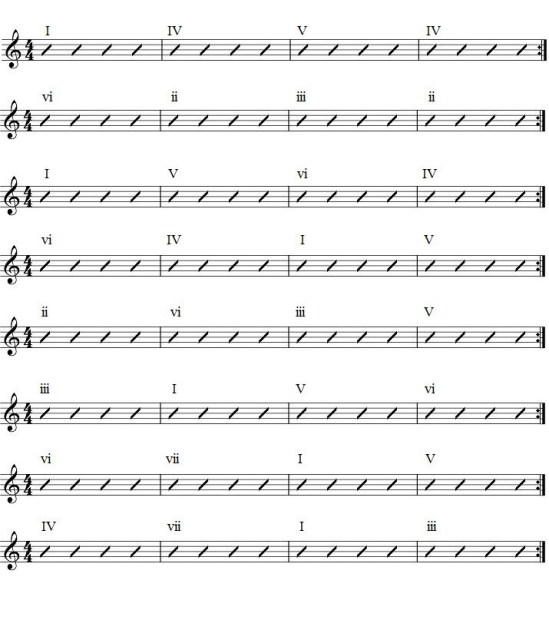
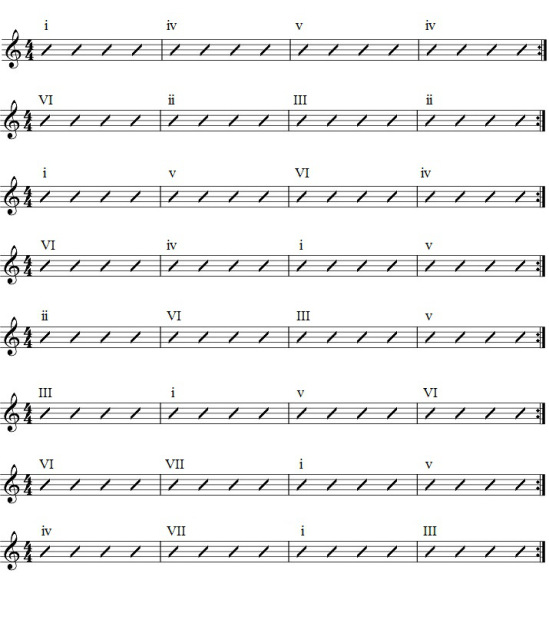
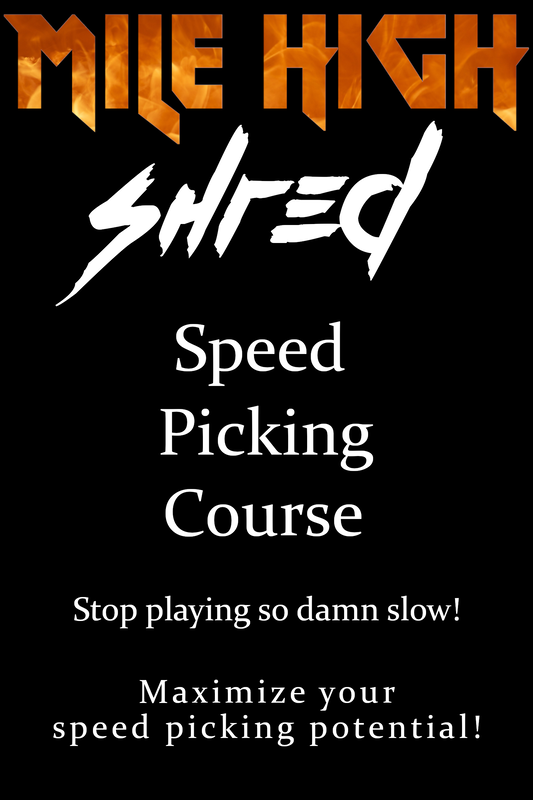
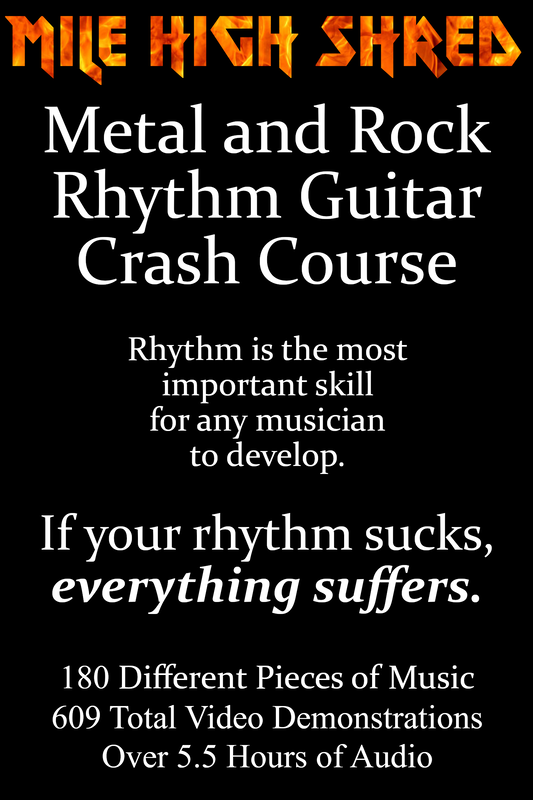
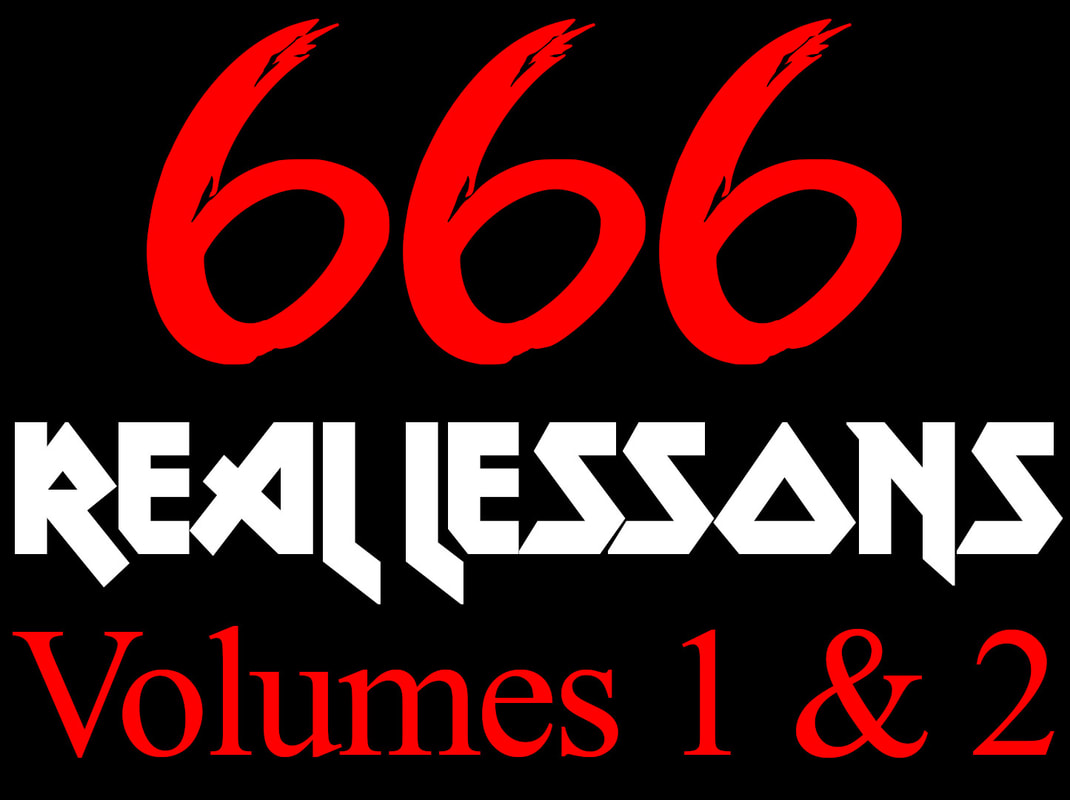
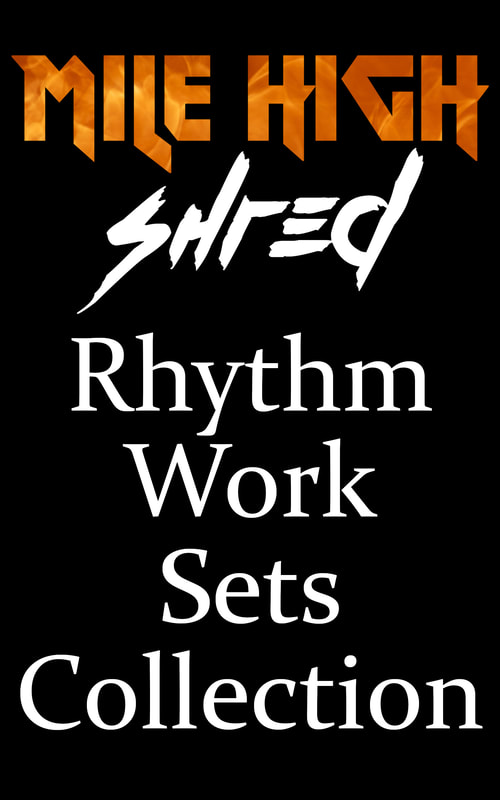
 RSS Feed
RSS Feed